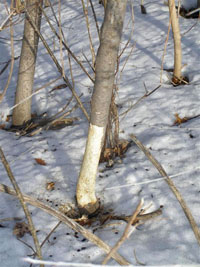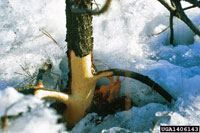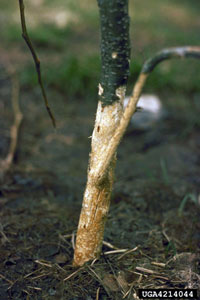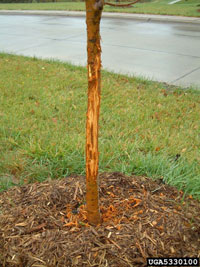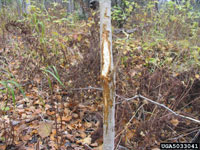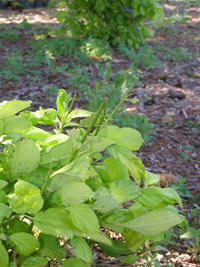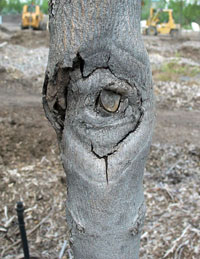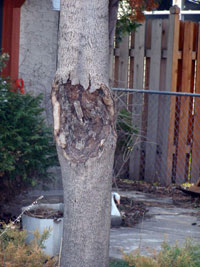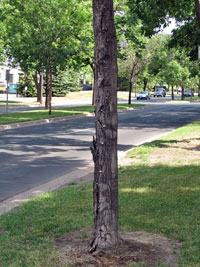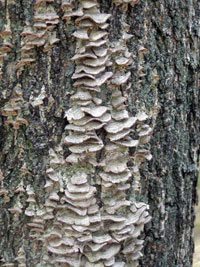Extension > Garden > Diagnose a problem > What's wrong with my plant? > Deciduous Trees > Maple > Bark chewed or removed
Maple > Trunk/Branches > Bark chewed or removed
1 of 6
Rabbit feeding
- Bark from young trees only is completely removed from the main trunk
- Regular scraping the size of a spoon tip can be seen in the wood
- Small twigs are cleanly cut off with a sharp edge, at a 45 degree angle
- Damage can occur from ground level to several feet up the trunk depending on the depth of winter snow
- Majority of damage occurs in winter and early spring
2 of 6
Vole feeding
- On young trees, bark is completely removed from the main trunk in irregular patches
- Scraping the size of a fork tine can be seen in exposed wood
- Damage occurs during winter from the ground level up to winter snow depth
- Trees and shrubs appear to “die suddenly” during the growing season, especially if they experience any drought stress
3 of 6
Deer rubbing on young trees
- Long lines of shredded or peeled off bark along main trunk up to 3 feet off the ground from antler rubbing.
- Wood may appear shiny or "polished"
- Leaves and small branches (>1 inch in diameter) cut off with a rough or ragged edge (Not a clean cut!)
- Feeding occurs from the ground up to 6 feet or slightly higher. Ragged edges, same as above, also if the bark is removed by a deer there will be no sign of teeth marks
- Damage is common only on young trees, old trees have thick bark and wide stem so are not used by deer for antler rubbing
- More information on Problems with deer
4 of 6
Eutypella canker
Eutypella parasitica
- As cankers age, the flattened surface turns black and bark begins to fall off revealing decaying wood in a target shape pattern below
- Young cankers appear as round flattened, bark covered areas on main trunk or larger branch
- Branch stub or other wound is often visible at center of the canker
- White to buff-colored fungal growth may be seen around outer portions of expanding canker if bark is removed
- Old cankers may develop a thick ring of wound wood surrounding the canker, making that area wider than the trunk above or below
- Occurs on all maples but common on sugar maples in forest settings and Norway maples in urban settings
- More information on Eutypella canker
5 of 6
Perennial nectria canker
Neonectria ditissima
- Sunken round to oval cankers with target shaped ridges of barkless wood on large branches or the main trunk
- Small dark sunken area on twigs that can girdle and kill the branch
- Red to reddish orange raised cushion like bumps can occasionally be seen on the edge of the canker
- More information on Perennial nectria canker
6 of 6
Sapwood rot
Schizophyllum commune and Cerrena unicolor
- Wood below fungal shelves is yellowish to white, crumbly and decayed; bark around fungal shelves is killed and often falls off
- Dead branches within the canopy
- Groups or rows of small (<2 inches wide) semi-circle self fungi along killed branches or on the main trunk
- Schizophyllum shelf fungi are white and appear fuzzy on top
- Cerrena shelf fungi are white to greenish grey and have concentric rings on the surface
- Occurs on trees with an open wound or crack



